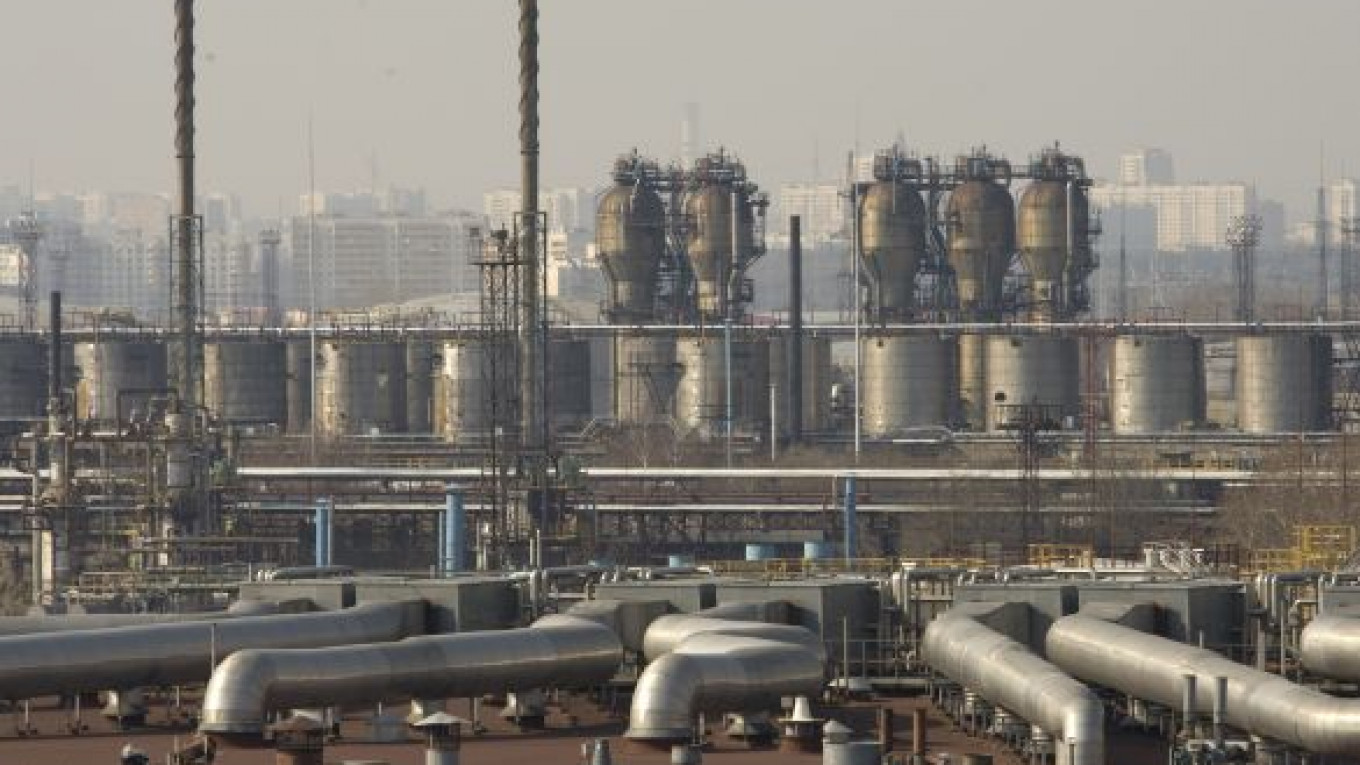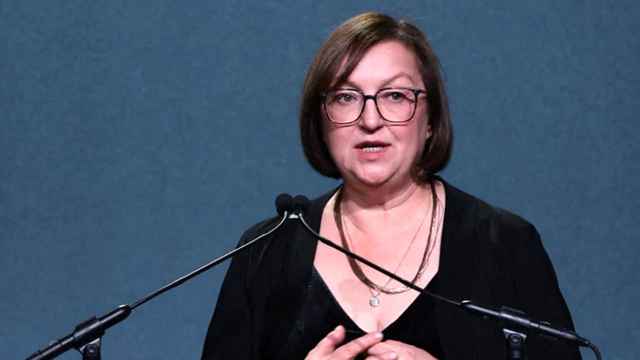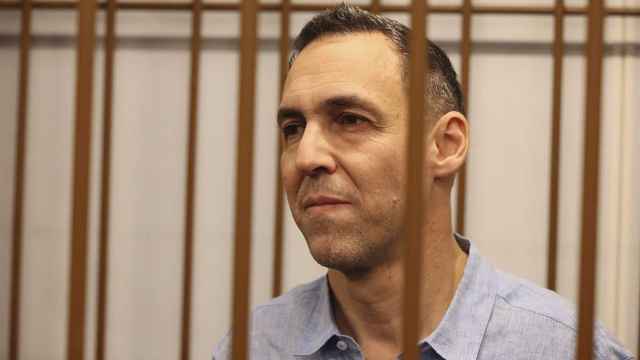Prices for producers of industrial goods decreased by 1.1 percent in July after edging down 0.9 percent in June and 2.3 percent in May, the State Statistics Service said on Thursday.
This follows a continuing trend this year, following an increase in 2011 by 12 percent — nearly twice the 6.1 percent consumer inflation rate. The July price decrease was largely driven by a 14.4 percent decline in oil prices.
In food production, including beverages and tobacco, prices for vegetable and animal oils and fats grew 9.1 percent, and for milling industry products they rose 6.6 percent.
This comes on the heels of Wednesday's announcement by the State Statistics Service about surprisingly robust industrial output in July,
but analysts said the summer tends to be volatile and it was too soon to suggest the economy is accelerating.
Russia's economy has been slowing, although growth, at 4 percent in the second quarter year on year, is much stronger than in many other economies and is supported by the high price of oil, the country's chief export.
Industrial output rose 3.4 percent in July from a year earlier, the State Statistics Service said, easily beating economists' forecasts for 2.5 percent growth and much stronger than a 1.9 percent increase in June.
"Industrial production will continue to be volatile, but looking at today's release, it signals more positive developments for the coming months," said Vladimir Pantyushin, chief economist at Barclays Capital in Moscow.
Manufacturing output, which rose 5.7 percent in July, was the main driver of growth in industrial production with a breakdown showing that domestic-oriented sectors such as construction materials fared particularly well. That points to relatively strong domestic demand.
"I would, however, put more focus on investment — and that is still the weakest link in the whole growth paradigm for Russia," Pantyushin said.
He said he was still considering cutting his 2012 economic growth forecast from 4.3 percent, despite Wednesday's data.
In June, capital investment by companies rose 4.7 percent year on year, significantly below analysts' forecasts for a 7 percent rise.
July's investment data, along with data on unemployment and retail sales, is due within days.
Dmitry Polevoy of ING in Moscow said those releases would give a better indication of how the economy fared at the start of the third quarter.
"We still stick to our view that domestic demand will be moderate in the second half of 2012, thus reducing support for the industrial sector," Polevoy wrote.
Morgan Stanley last week slashed its forecast for full-year growth to 4.2 percent from 5 percent, after economic growth slowed in the second quarter from 4.9 percent in the first quarter.
The Economic Development Ministry forecasts 3.5 percent GDP growth this year, but officials have mentioned the possibility of raising it to 3.8-4.0 percent.
If data due this week follows industrial output and surprises on the upside, that would probably strengthen expectations for an interest rate rise in September to control unruly inflation.
Last week, the Central Bank kept its key interest rates on hold, but sent the strongest signal this year that policy tightening may lie ahead if inflation risks from food prices increase.
"[The data] may boost talk of a rate hike, given the regulator was mainly unworried about industrial performance and more hawkish on the inflation outlook during its last meeting," Polevoy said.
Consumer prices rose 5.7 percent year on year in the first week of August, making the Central Bank's aim of keeping full-year inflation down to a targeted 5-6 percent more difficult.
Pantyushin at Barclays said industrial output data would only be one of several factors affecting a rate decision.
"The data is not really placing restrictions on the Central Bank's decision, as it is always one of many listed factors," he said, adding that the Central Bank is likely to focus more on the banking sector, and retail banking in particular, while making its decision.
(Reuters, Interfax)
The ruble gained against the dollar as crude, Russia's main export earner, traded at the highest in more than three months, Bloomberg reported.
The currency appreciated 0.2 percent to 31.89 per dollar, the most since Aug. 6. Crude traded in New York rose for a third day, adding as much as 0.8 percent to $95.14 a barrel. That would be the highest close since May 11. Brent crude was trading at $114.69 a barrel at the end of Thursday, up 0.32 percent. Oil and natural gas contribute about 50 percent of Russia's government budget revenue.
Rising oil prices today were supporting the ruble, Igor Akinshin, a Moscow-based currency trader at Alfa Bank said by phone. Russian exporters may support the currency next week as they pay taxes by month-end, he said.
Investors pared bets on the ruble weakening against the dollar, with non-deliverable forwards showing the currency at 32.3878 in three months versus 32.4230 on Aug. 15.
The extra yield that investors demand to own Russia's dollar bonds over U.S. Treasuries rose two basis points to 223, according to JPMorgan Chase's EMBI Global Index. Yields on the government's ruble bonds due April 2021 fell one basis point Thursday to 7.86 percent, data compiled by Bloomberg show.
A Message from The Moscow Times:
Dear readers,
We are facing unprecedented challenges. Russia's Prosecutor General's Office has designated The Moscow Times as an "undesirable" organization, criminalizing our work and putting our staff at risk of prosecution. This follows our earlier unjust labeling as a "foreign agent."
These actions are direct attempts to silence independent journalism in Russia. The authorities claim our work "discredits the decisions of the Russian leadership." We see things differently: we strive to provide accurate, unbiased reporting on Russia.
We, the journalists of The Moscow Times, refuse to be silenced. But to continue our work, we need your help.
Your support, no matter how small, makes a world of difference. If you can, please support us monthly starting from just $2. It's quick to set up, and every contribution makes a significant impact.
By supporting The Moscow Times, you're defending open, independent journalism in the face of repression. Thank you for standing with us.
Remind me later.






